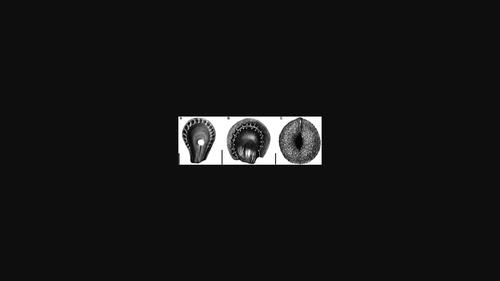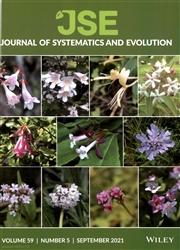Fossil endocarps of Menispermaceae from the late Paleocene of Paris Basin, France
IF 2.9
1区 生物学
Q1 Agricultural and Biological Sciences
引用次数: 0
Abstract
Menispermaceae are an angiosperm family of mostly climbing plants distributed throughout tropical regions. The fruits in this family have a strong sclerified endocarp and can be used for reliable species-level identifications, even in a fossilized form. New Paleocene-age menispermaceous endocarps have recently been discovered in South America and Asia, while in Europe, they are mostly found in the Eocene. This paper focuses on the study of fossil endocarps belonging to Menispermaceae, found in the Petit-Pâtis locality, which is one of the few Paleocene localities in Europe. The locality is dated to the late Paleocene (57–56 Ma) and the fossils represent flora and fauna in the Paris Basin before the onset of the Paleocene–Eocene Thermal Maximum. Lignitized fossils were photographed and their morphology was analyzed using computed tomography, scanning electron microscope, and geometric morphometric analysis. The analysis of 36 fossils belonging to Menispermaceae revealed that three genera (Stephania, Palaeosinomenium, Tinospora) were present in the late Paleocene of Paris Basin. Differences in internal morphology and a more inflated endocarp base led to a description of a new fossil species—Palaeosinomenium oisensis sp. nov. The occurrence of these genera in the Paleocene of France is consistent with the suggestion that megathermal flora was present in the Paris Basin before the Paleocene–Eocene Thermal Maximum. These three genera are currently the oldest occurrences in Europe, highlighting the connection between paleofloras of the Americas, Europe, and Asia in the Paleocene.

法国巴黎盆地晚古新世Menispermaceae的内腕类化石
menispermenaceae是一个被子植物科,以攀缘植物为主,分布于热带地区。这个科的果实具有坚硬的内果皮,可以用于可靠的种水平鉴定,即使是化石形式。最近在南美洲和亚洲发现了新的古新世半生内腕类动物,而在欧洲,它们大多是在始新世发现的。本文主要研究了在petit - patiss地区发现的Menispermaceae内腕类化石,该地区是欧洲为数不多的古新世地区之一。该化石定位于古新世晚期(57 ~ 56 Ma),代表了古新世—始新世热极大期开始前巴黎盆地的动植物群。对木质素化化石进行了拍摄,并利用计算机断层扫描、扫描电镜和几何形态计量学分析对其形态进行了分析。对巴黎盆地晚古新世的36块月牙虫科化石进行了分析,发现在巴黎盆地存在3个属(Stephania, Palaeosinomenium, Tinospora)。内部形态的差异和更膨胀的内皮基部导致了一种新的化石物种的描述- paleosinomenium oisensis sp. 11 .这些属在法国古新世的出现与古新世-始新世热极大期之前巴黎盆地存在大热植物群的建议一致。这三个属是目前在欧洲出现的最古老的植物,突出了古新世美洲、欧洲和亚洲的古植物区系之间的联系。
本文章由计算机程序翻译,如有差异,请以英文原文为准。
求助全文
约1分钟内获得全文
求助全文
来源期刊

Journal of Systematics and Evolution
Agricultural and Biological Sciences-Ecology, Evolution, Behavior and Systematics
CiteScore
7.40
自引率
8.10%
发文量
1368
审稿时长
6-12 weeks
期刊介绍:
Journal of Systematics and Evolution (JSE, since 2008; formerly Acta Phytotaxonomica Sinica) is a plant-based international journal newly dedicated to the description and understanding of the biological diversity. It covers: description of new taxa, monographic revision, phylogenetics, molecular evolution and genome evolution, evolutionary developmental biology, evolutionary ecology, population biology, conservation biology, biogeography, paleobiology, evolutionary theories, and related subjects.
 求助内容:
求助内容: 应助结果提醒方式:
应助结果提醒方式:


